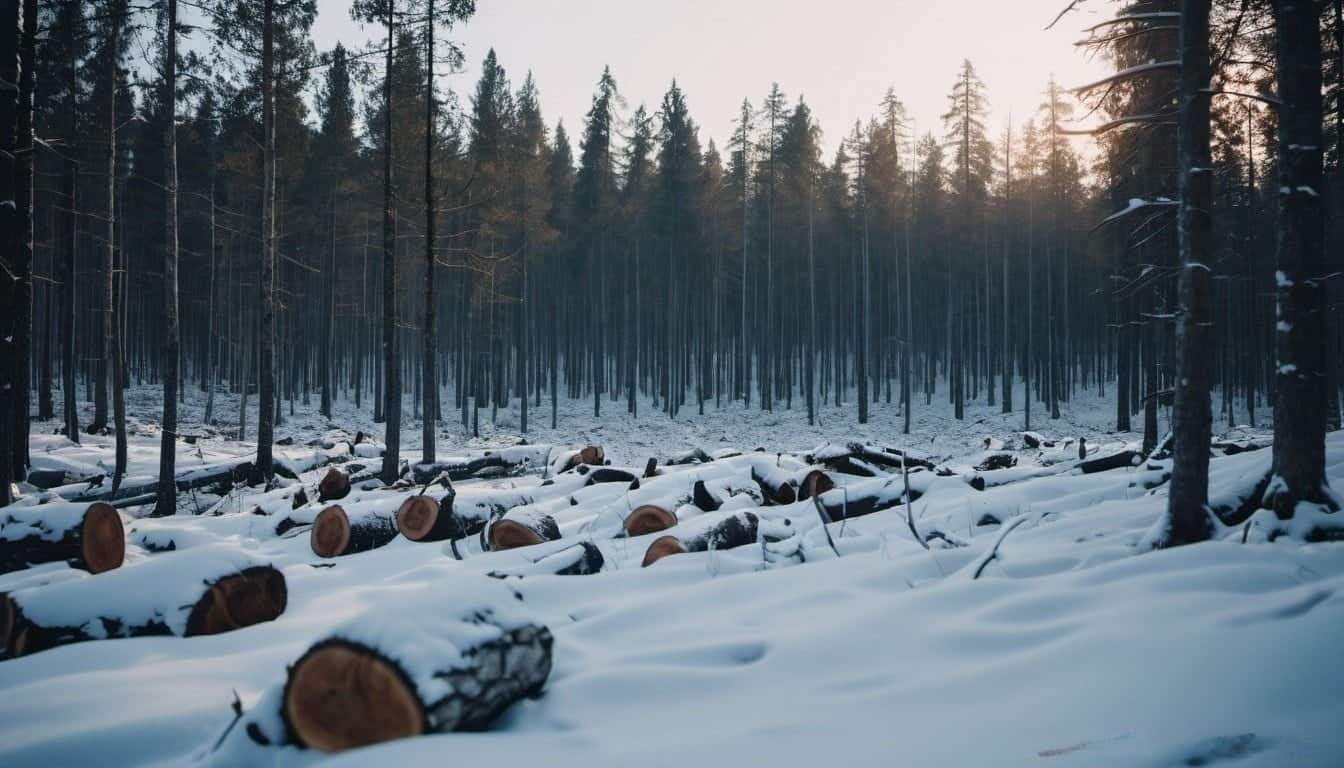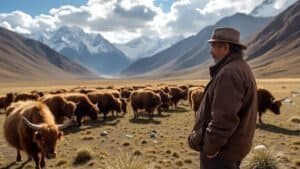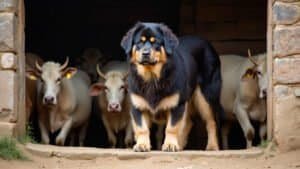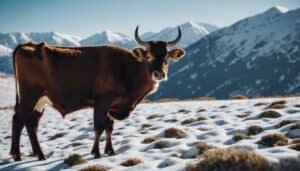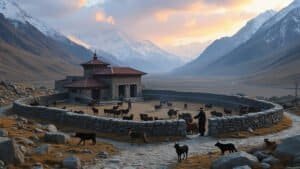Introduction
Human-snow leopard conflicts are a growing concern in regions where these majestic big cats share their habitats with local communities. This article delves into the primary causes of these conflicts, beginning with the impact of habitat loss driven by human activities
We will explore the significant role of livestock predation, where snow leopards often target domestic animals, leading to economic hardships. Additionally, the influence of climate change on snow leopard behavior and its contribution to conflicts will be examined
Regional hotspots for these tensions, as well as cultural perceptions and community responses, will also be highlighted. Finally, we will discuss strategies and conservation efforts aimed at reducing these conflicts
How Habitat Loss Contributes to Human-Snow Leopard Conflicts
Human-snow leopard conflicts have been increasingly attributed to habitat loss, which is one of the most significant threats to the survival of these elusive big cats
Snow leopards are native to some of the most rugged and remote mountain ranges in Central and South Asia, including the Himalayas, the Tien Shan, and the Altai Mountains
However, as human populations expand and economic activities encroach on these remote areas, snow leopard habitats are being increasingly fragmented and degraded, leading to more frequent and intense interactions between humans and these predators
Impact of Urbanization on Snow Leopard Habitats
Urbanization is a leading cause of habitat loss for snow leopards. As cities and towns expand into previously wild areas, the natural habitats of snow leopards shrink. This expansion is often driven by the construction of roads, residential areas, and industrial zones
These developments disrupt the continuity of snow leopard territories, forcing them into closer proximity with human settlements. A 2016 study by the World Wildlife Fund (WWF) highlighted that nearly 40% of snow leopard habitats are now within 50 kilometers of human settlements, increasing the likelihood of encounters
Urbanization not only reduces the available space for snow leopards to roam but also leads to the depletion of prey species. As natural prey becomes scarce, snow leopards may venture closer to villages in search of food, often targeting livestock, which exacerbates conflicts with local communities
Additionally, the noise and pollution associated with urban areas can disrupt snow leopard behavior, making it harder for them to hunt and communicate
Role of Agricultural Expansion in Habitat Encroachment
Agricultural expansion poses another significant threat to snow leopard habitats. In many regions, arable land is limited, and farmers are increasingly cultivating land that was once the domain of snow leopards
This conversion of wild landscapes into agricultural fields reduces the available habitat for snow leopards and their prey, leading to increased competition for resources
A report from the Snow Leopard Trust notes that in areas like Mongolia and Kyrgyzstan, pastoralist communities are increasingly settling in high-altitude pastures, which are critical habitats for snow leopards
These areas, once remote and relatively undisturbed, are now being used for livestock grazing, leading to habitat degradation. Overgrazing by livestock can further diminish the natural vegetation, which in turn affects the herbivores that snow leopards rely on for food
Moreover, the conversion of land for agriculture often leads to the erection of fences and barriers, further fragmenting snow leopard habitats. These physical barriers can hinder the movement of snow leopards, isolating populations and reducing genetic diversity, which is vital for the species’ long-term survival
Effects of Deforestation on Snow Leopard Behavior
Deforestation, driven by logging and land clearing for agriculture or development, is another major factor contributing to habitat loss
While snow leopards primarily inhabit mountainous regions above the tree line, the lower elevations where forests are present serve as crucial buffer zones between human activities and the high-altitude territories of snow leopards
The removal of these forests not only reduces the available habitat but also forces snow leopards to move into areas closer to human activity, increasing the risk of conflict
In some regions, deforestation is also linked to illegal logging, which can lead to the opening of new access routes into previously inaccessible areas. These routes can bring more human activity into contact with snow leopards, further increasing the chances of conflict
A study published in Conservation Biology in 2019 found that areas with high rates of deforestation also had a higher incidence of snow leopard attacks on livestock, suggesting a direct correlation between habitat degradation and conflict rates
Furthermore, the loss of forested areas can lead to changes in the microclimate and water availability in mountainous regions, indirectly affecting snow leopard populations by altering their prey base
The Role of Livestock Predation in Human-Snow Leopard Conflicts
Livestock predation is one of the most immediate and direct causes of human-snow leopard conflicts. In regions where these big cats share space with pastoralist communities, snow leopards often prey on domestic animals, leading to significant economic losses for local farmers
This not only creates tension between humans and wildlife but also jeopardizes the conservation efforts aimed at protecting snow leopards. Understanding the dynamics of livestock predation is crucial for developing strategies to mitigate these conflicts and foster coexistence
Frequency of Livestock Attacks by Snow Leopards
Snow leopards are opportunistic predators, and in areas where their natural prey is scarce, they may turn to livestock as an alternative food source
Studies have shown that livestock can make up a substantial portion of a snow leopard’s diet in certain regions. For instance, research conducted in the Indian Himalayas revealed that livestock constituted up to 25% of the snow leopard’s diet in areas with high human presence
The frequency of these attacks varies depending on several factors, including the density of livestock, the availability of wild prey, and the proximity of human settlements to snow leopard habitats
In some high-conflict areas, individual snow leopards have been known to kill multiple livestock in a single attack, a behavior known as surplus killing. This can be devastating for small-scale farmers who rely heavily on their livestock for their livelihoods
A 2020 study published in Global Ecology and Conservation found that snow leopard attacks on livestock are more frequent in winter when natural prey is less available and livestock is more accessible
The study also noted that attacks are more common in regions where traditional herding practices, such as guarding livestock, have declined, leaving animals more vulnerable to predation
Economic Consequences for Local Communities
The economic impact of livestock predation by snow leopards can be severe, particularly for impoverished communities in remote mountain regions
Livestock often represents a significant portion of a family’s wealth and is a critical resource for food, income, and cultural practices. The loss of even a few animals can lead to financial instability and food insecurity, exacerbating poverty in these already vulnerable areas
In Mongolia, for example, where pastoralism is a way of life, snow leopard predation on livestock has been a significant issue. A survey conducted by the Snow Leopard Trust in 2018 found that in some regions, herders reported losing up to 12% of their livestock to snow leopards annually. This loss can amount to thousands of dollars, a substantial sum for families in these areas
Moreover, the financial burden of livestock losses often leads to retaliatory killings of snow leopards. Herders, driven by anger and economic desperation, may resort to poisoning or trapping snow leopards to protect their livelihoods
This retaliatory behavior poses a significant threat to snow leopard populations, which are already vulnerable due to habitat loss and poaching
Strategies to Protect Livestock from Snow Leopards
To reduce the incidence of livestock predation and mitigate conflicts, various strategies have been implemented across snow leopard range countries. One of the most effective approaches has been the establishment of predator-proof corrals
These reinforced enclosures protect livestock at night when they are most vulnerable to snow leopard attacks. In regions like the Pamir Mountains in Tajikistan, these corrals have significantly reduced livestock losses and have been well-received by local communities
Another successful strategy is the implementation of community-based insurance schemes. These programs compensate herders for livestock losses due to snow leopard predation, reducing the economic impact and discouraging retaliatory killings
The Snow Leopard Trust has pioneered such programs in Mongolia and India, where herders contribute to a communal fund that is used to compensate members in the event of livestock loss. These insurance schemes not only provide financial relief but also foster positive attitudes toward snow leopard conservation
In addition to these measures, educating communities about snow leopard behavior and conservation is crucial. In areas where traditional knowledge and herding practices have declined, reintroducing practices such as constant vigilance, the use of guard dogs, and rotational grazing can help reduce the risk of predation
Furthermore, involving local communities in conservation efforts, such as monitoring snow leopard populations and protecting their habitats, can lead to a more sustainable coexistence between humans and snow leopards
Climate Change and Its Impact on Snow Leopard Behavior
Climate change is increasingly recognized as a significant factor influencing snow leopard behavior and exacerbating conflicts with human populations
The high-altitude ecosystems that snow leopards call home are particularly vulnerable to the effects of global warming, which is altering landscapes, disrupting prey availability, and forcing snow leopards into closer contact with human settlements
Understanding how climate change affects snow leopard behavior is essential for addressing the growing number of conflicts and ensuring the long-term survival of this species
Altered Snow Leopard Territories Due to Climate Shifts
As global temperatures rise, the natural habitats of snow leopards are undergoing profound changes
The snow leopard’s range, traditionally confined to high-altitude regions, is being pushed higher as temperatures increase. This phenomenon, known as “habitat compression,” is reducing the amount of suitable terrain available for snow leopards and their prey
A study published in Nature Climate Change in 2013 predicted that up to 30% of snow leopard habitat could be lost by the end of the century due to climate-induced shifts in vegetation and snow cover
As the tree line moves upward and formerly barren areas become vegetated, snow leopards are forced to adapt by shifting their territories. This can lead to increased competition with other predators, such as wolves, and force snow leopards into areas closer to human settlements, where the risk of conflict is higher
Additionally, the fragmentation of snow leopard habitats due to climate change can isolate populations, making it harder for these animals to find mates and maintain genetic diversity. Isolated populations are more vulnerable to extinction due to inbreeding and the inability to adapt to changing environmental conditions
Influence of Changing Prey Availability
Climate change also impacts the availability of prey species that snow leopards depend on, such as blue sheep, ibex, and other mountain ungulates. As temperatures rise, the distribution and abundance of these prey species are changing, often leading to a decline in their populations
This decline is partly due to altered vegetation patterns, which affect the food sources of these herbivores, and partly due to increased competition from domestic livestock, which graze in the same areas
Research conducted by the International Union for Conservation of Nature (IUCN) in 2020 found that in some regions, snow leopards are struggling to find sufficient prey due to these changes
This scarcity of natural prey drives snow leopards to hunt livestock more frequently, thereby increasing conflicts with humans. The IUCN report highlighted that in areas where prey populations have declined by more than 50%, snow leopard attacks on livestock have doubled over the past decade
Moreover, climate change is leading to more unpredictable and extreme weather patterns, such as harsher winters and delayed monsoon seasons, which can further reduce prey availability. During these periods, snow leopards are more likely to venture into human settlements in search of food, increasing the likelihood of encounters with people and livestock
Long-term Effects on Snow Leopard Populations
The long-term effects of climate change on snow leopard populations could be profound. As their habitats and prey continue to be affected, snow leopards may face increased mortality rates, lower reproductive success, and reduced genetic diversity
These challenges are compounded by the fact that snow leopards are already classified as vulnerable by the IUCN, with an estimated population of only 3,500 to 7,000 individuals remaining in the wild
One of the most concerning potential impacts of climate change is the increased likelihood of human-wildlife conflicts. As snow leopards are forced into closer proximity with human communities, the frequency of retaliatory killings is likely to rise. This could lead to a further decline in snow leopard populations, pushing the species closer to extinction
Conservationists are increasingly focusing on strategies to mitigate the impact of climate change on snow leopards. These strategies include preserving and restoring key habitats, protecting prey species, and promoting community-based conservation initiatives that help local populations adapt to the changing environment while reducing their dependence on livestock
In some areas, efforts are being made to create climate-resilient landscapes that can support both snow leopards and the human communities that share their habitat
The success of these conservation efforts will depend on a comprehensive understanding of how climate change affects snow leopard behavior and on the ability to implement adaptive management strategies that can respond to the evolving challenges posed by a warming world
Regional Hotspots for Human-Snow Leopard Conflicts
Human-snow leopard conflicts are not uniformly distributed across the snow leopard’s range. Certain regions, due to their unique geographic, economic, and cultural factors, experience higher levels of conflict
Identifying these regional hotspots is crucial for targeted conservation efforts and conflict mitigation strategies. This section explores some of the most affected areas, examining the causes and consequences of conflicts in these regions
Conflict Zones in Central Asia
Central Asia, particularly countries like Kyrgyzstan, Tajikistan, and Kazakhstan, is a significant hotspot for human-snow leopard conflicts. These countries are home to vast mountain ranges, including the Tien Shan and the Pamirs, which provide ideal habitats for snow leopards
However, the proximity of these habitats to human settlements, coupled with the reliance of local communities on livestock herding, has led to frequent encounters between snow leopards and humans
In Kyrgyzstan, for example, snow leopard attacks on livestock are a common occurrence, especially in the remote and rugged regions where herding is a primary source of livelihood
A 2017 study by the Snow Leopard Trust reported that nearly 60% of households in these areas had experienced livestock losses due to snow leopard predation. This has fueled negative perceptions of snow leopards among local communities and has led to retaliatory killings, further endangering the species
Efforts to mitigate these conflicts in Central Asia have included the establishment of community-based conservation programs, where local herders are involved in monitoring snow leopard populations and protecting their habitats
Additionally, the introduction of predator-proof corrals and compensation schemes for livestock losses has shown promise in reducing the frequency of conflicts and improving community attitudes towards snow leopard conservation
Vulnerable Communities in the Himalayas
The Himalayas, spanning countries like India, Nepal, Bhutan, and Pakistan, are another major conflict zone for human-snow leopard interactions. The rugged terrain and harsh climate of the Himalayas create challenging living conditions for both humans and snow leopards, leading to a complex and often tense relationship between the two
In the Indian state of Himachal Pradesh, for instance, snow leopard attacks on livestock are particularly prevalent during the winter months when natural prey is scarce
According to a 2019 report by the Wildlife Institute of India, snow leopards in this region have increasingly targeted livestock as their primary food source, leading to significant economic losses for local herders. These losses have prompted retaliatory killings and have heightened tensions between conservationists and local communities
Nepal is another hotspot within the Himalayas, where snow leopard conservation faces numerous challenges. The country’s mountainous regions are home to some of the highest densities of snow leopards in the world, but they are also areas where livestock herding is a critical livelihood
The Snow Leopard Conservancy, a leading conservation organization, has been working in Nepal to implement conflict mitigation strategies, including livestock insurance schemes and the promotion of eco-tourism as an alternative income source for local communities. These efforts aim to reduce the economic impact of livestock losses and foster a sense of stewardship towards snow leopards among local populations
Case Studies of High-Conflict Areas
To better understand the dynamics of human-snow leopard conflicts, it is useful to examine specific case studies from regions where these conflicts are particularly intense
One such case is the Wakhan Corridor in Afghanistan, a narrow strip of land between the Pamir Mountains and the Hindu Kush. The Wakhan Corridor is one of the most remote and isolated regions in the world, yet it is a critical habitat for snow leopards. However, the local communities in this area rely heavily on livestock herding, leading to frequent clashes with snow leopards
A 2021 study by the Wildlife Conservation Society (WCS) found that in the Wakhan Corridor, nearly 80% of households reported livestock losses due to snow leopards, with some families losing up to half of their herds in a single year . These losses have devastating economic impacts and have led to an increase in retaliatory killings, despite the cultural reverence for snow leopards in some parts of the region
Another high-conflict area is the Altai Mountains, which span Russia, Mongolia, China, and Kazakhstan. In this region, snow leopard populations are under pressure from habitat fragmentation, poaching, and livestock predation
The Altai Mountains are also home to a rich diversity of wildlife, including prey species like ibex and argali, which are also targeted by poachers. The combination of poaching, habitat loss, and human-wildlife conflicts has made the Altai a critical area for snow leopard conservation efforts
Conservation initiatives in these high-conflict areas often focus on integrating local communities into conservation efforts. In the Wakhan Corridor, for example, the WCS has implemented programs that involve local herders in snow leopard monitoring and habitat protection
Similarly, in the Altai Mountains, cross-border conservation efforts have been initiated to address the transnational nature of snow leopard habitats and to combat poaching and illegal wildlife trade
Cultural Perceptions and Responses to Snow Leopard Threats
Cultural perceptions of snow leopards play a crucial role in shaping the responses of local communities to conflicts with these animals. In many regions where snow leopards are found, they are not just seen as wildlife but also as significant cultural symbols, spiritual beings, or even omens
These perceptions influence how communities react to snow leopard threats, affecting conservation efforts and the strategies used to mitigate human-snow leopard conflicts
Traditional Beliefs About Snow Leopards
In many snow leopard range countries, traditional beliefs and folklore significantly influence how these big cats are viewed. In some cultures, snow leopards are revered as sacred animals or symbols of power and resilience
For example, in the Buddhist communities of the Himalayas, snow leopards are often seen as embodiments of local deities or spirits. This reverence can lead to a protective attitude towards the animals, even in the face of livestock losses
In Mongolia, snow leopards are known as “grey ghosts” due to their elusive nature and are often associated with the spirit world. Many Mongolians believe that killing a snow leopard can bring bad luck or misfortune, which has traditionally discouraged retaliatory killings
A study published in the journal Human Dimensions of Wildlife in 2015 found that these cultural beliefs have played a significant role in reducing conflicts in certain Mongolian communities, where snow leopards are protected not just by law but by cultural taboos
However, not all traditional beliefs are protective. In some regions, snow leopards are viewed as pests or threats to livelihoods. In parts of Central Asia, for instance, snow leopards have historically been seen as symbols of misfortune or evil, leading to more aggressive responses when these animals threaten livestock. These negative perceptions can result in higher rates of retaliatory killings, despite legal protections
Community-Based Conservation Initiatives
Recognizing the importance of cultural perceptions in snow leopard conservation, many organizations have implemented community-based initiatives that incorporate traditional beliefs and practices into conservation strategies
These initiatives often aim to shift local perceptions by highlighting the ecological and cultural importance of snow leopards, while also providing practical solutions to reduce conflicts
One successful example of such an initiative is the Snow Leopard Enterprises program, which operates in Mongolia, Kyrgyzstan, and other snow leopard range countries. This program works with local communities to create sustainable livelihoods through the production and sale of handicrafts made from local materials
In return, participating communities agree to protect snow leopards and their habitats. By providing an alternative income source, the program reduces the economic pressure that leads to retaliatory killings, while also reinforcing positive cultural attitudes towards snow leopards
In Nepal, community-based ecotourism initiatives have been developed to leverage the cultural significance of snow leopards. These programs encourage local communities to view snow leopards as valuable assets that can attract tourists and generate income
By involving communities in ecotourism, these initiatives not only promote snow leopard conservation but also enhance local livelihoods and strengthen traditional conservation practices
Education and Awareness Programs
Education and awareness programs are another critical component of efforts to change cultural perceptions and reduce conflicts. These programs aim to educate local communities about the ecological role of snow leopards, the importance of biodiversity, and the benefits of coexistence with wildlife
In many regions, especially where negative perceptions of snow leopards are prevalent, education programs focus on dispelling myths and misconceptions about these animals
For example, in some parts of Pakistan and India, educational campaigns have been launched to teach herders about the behavior of snow leopards and the reasons behind livestock predation. By understanding the natural behavior of snow leopards, herders are better equipped to implement non-lethal methods of protecting their livestock, such as improved corrals or the use of guard dogs
In Bhutan, the government has integrated snow leopard conservation into the national education curriculum, teaching children about the importance of protecting these big cats from a young age. These efforts have been complemented by community outreach programs that involve local leaders and religious figures in promoting the message of conservation
A 2021 report by the Bhutan Foundation noted that these education programs have significantly improved community attitudes towards snow leopards, leading to a reduction in conflicts and retaliatory killings
Moreover, awareness campaigns often use traditional media, such as radio and folk performances, as well as modern platforms like social media, to reach a wider audience. These campaigns are designed to resonate with local cultural values and to emphasize the shared benefits of snow leopard conservation, both for biodiversity and for the well-being of human communities
Conclusion
Human-snow leopard conflicts are driven by a complex interplay of factors, including habitat loss, livestock predation, climate change, regional vulnerabilities, and cultural perceptions. As human populations expand into snow leopard territories, these majestic cats are increasingly forced into closer contact with communities, leading to economic and emotional distress for those affected
Livestock predation remains a significant cause of conflict, often leading to retaliatory killings that threaten snow leopard populations. Climate change further exacerbates these challenges by altering snow leopard habitats and prey availability, pushing the species into more vulnerable situations
Efforts to mitigate these conflicts must be multifaceted, incorporating habitat protection, sustainable livestock management, climate resilience, and community-based conservation initiatives
Understanding and respecting local cultural perceptions of snow leopards is also crucial, as these can either hinder or help conservation efforts. By fostering coexistence and promoting sustainable practices, it is possible to reduce human-snow leopard conflicts and ensure the survival of these iconic predators for future generations
